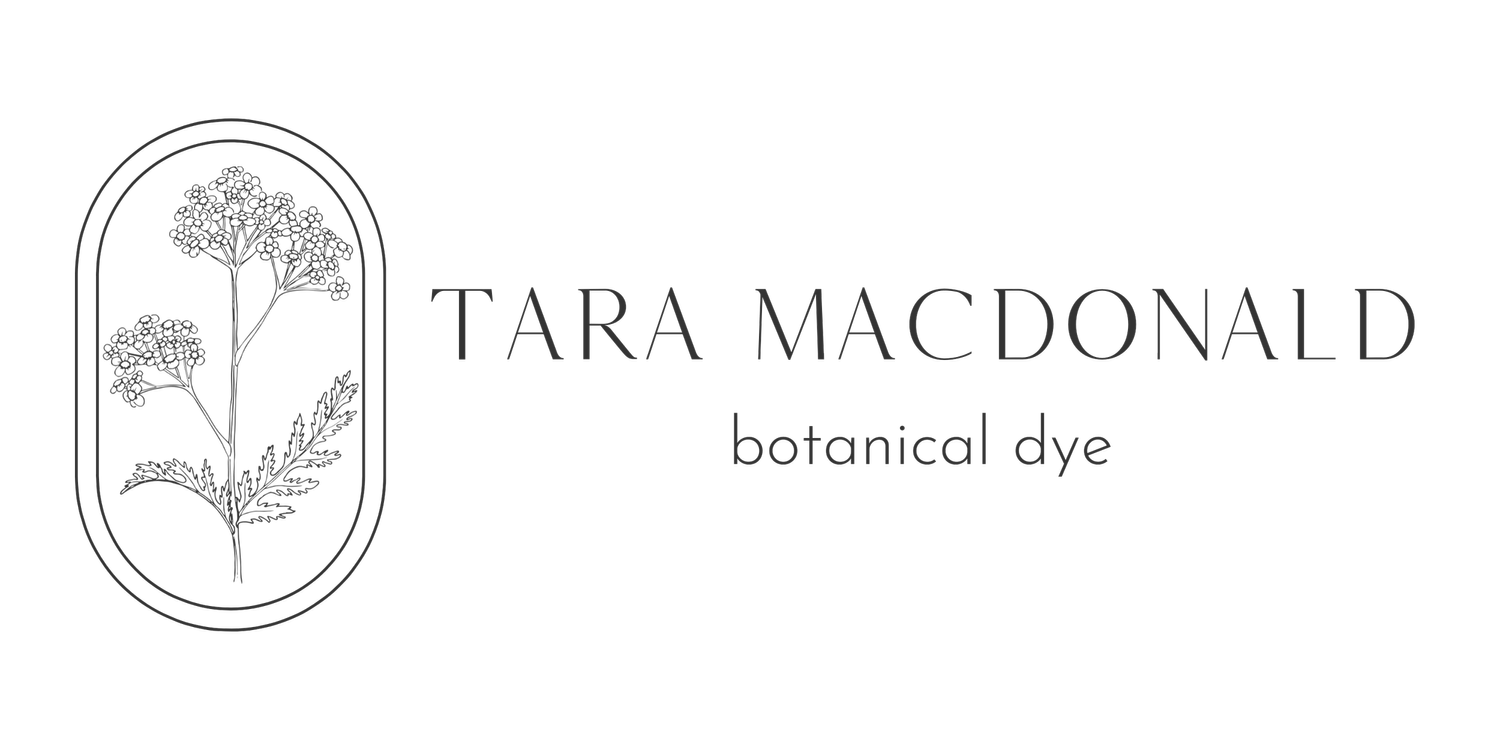Dyeing with Fresh Indigo
Summertime Blues
We are all familiar with the colour indigo and as a natural dye it has been used historically to produce a range of blues.
Most of us know it as the dye behind the ubiquitous blue jean and it is often used to create patterns in shibori dyeing.
It is mostly derived from plants in the Genus Indigofera, especially Indigofera tinctoria; as well as Persicaria tinctoria (Dyers Knotweed) and Isatis tinctoria (Woad).
Most indigo dyeing is a complex process involving a vat, of which various forms can be used.
What is exciting and accessible however is that the fresh leaves of indigo plants can be used to easily give the most beautiful sea greens and sky blues. Here I'll share with you my summer experiments in blue with fresh indigo.
The Plants
This year I decided to really go for it in my dye garden to give myself lots of fresh material to work with. In late March I sowed my little pack of Japanese Indigo/Dyers Knotweed (Persicaria tinctoria) seeds. Although these annuals are the best species to grow for small scale dyeing, germination was poor and I only had a handful of little plants to nurture. After planting out in May, I did eventually end up with a nice patch to experiment with. One thing is for sure though, they did not like the hot and dry summer and could have done with a shadier spot- next year!
Fresh indigo works best on protein fibres such as silk and wool. Plant fibres such as cotton can be used if they have had a soy milk treatment that has been left to cure. I decided to use some silk scarves and ribbons as I can't resist that sumptuous shine and feel. The fabric doesn't need a mordant but always should be thoroughly scoured first. Japanese indigo plants can be cut up to 2-3 times a year and will regrow so I had the luxury of having leaves to play with all summer. There are two main methods of using fresh indigo - the Blender Method and Salt Rub Method.
Two Methods of Dyeing with Fresh Indigo
Blender Method
This method simply involves making a puree out of the fresh leaves, stripped from the stems. Due to the chemistry of Indigo it's important that the leaves are picked early in the day and kept cool during the process. I used about 50g of silk and 120g of leaves. Working quickly I whizzed up the leaves with some cold water and put the mixture through an old tea towel. The wet silk was then added and the liquid worked into it with my hands. There is only about 20 mins from when you blend the leaves before an essential enzyme breaks down and the blue pigment is no longer soluble, so there was no hanging around. I then rinsed the fabric and hung it to dry, out of the sun and watched the magic happen!
Salt Rub Method
This method is the easiest and most low tech and in that respect I found it the most satisfying. A simple picking of leaves and handful of salt is all thats needed, along with the wetted silk. Again I used about 50g of silk to 120g of leaves, keeping them cool and working quickly. By gently massaging the leaves and salt into the fabric the gorgeous blues revealed themselves- amazing! Such a beautiful process to watch. Again I rinsed and dried out of the sun. Any remaining leaf pulp can be put on the compost heap for an all round soil to soil process. This method definitely gave me richer colours although the Blender method would be better for any resist techniques.
Propagation - More Indigo Plants
Another one of the great things about Persicaria tinctoria is how easily it takes from cuttings. When I stripped the leaves for dyeing I left the top couple of leaves and cut just beneath a node, making a little cutting- all I did was place them in a jam jar of water and the roots came within days! I've potted them up in a large pot to hopefully prolong the season. I also plan to collect my own seed this year so I know it's fresh - and I'll have plenty of it. Hopefully enough plants to extract pigment next summer (a gardener is always thinking of next year!)
Overall I have loved experimenting with fresh Indigo and I hope you do too. Also big thanks to the Dogwood Dyer - a Year in Natural Dyes for inspiration and advice.













